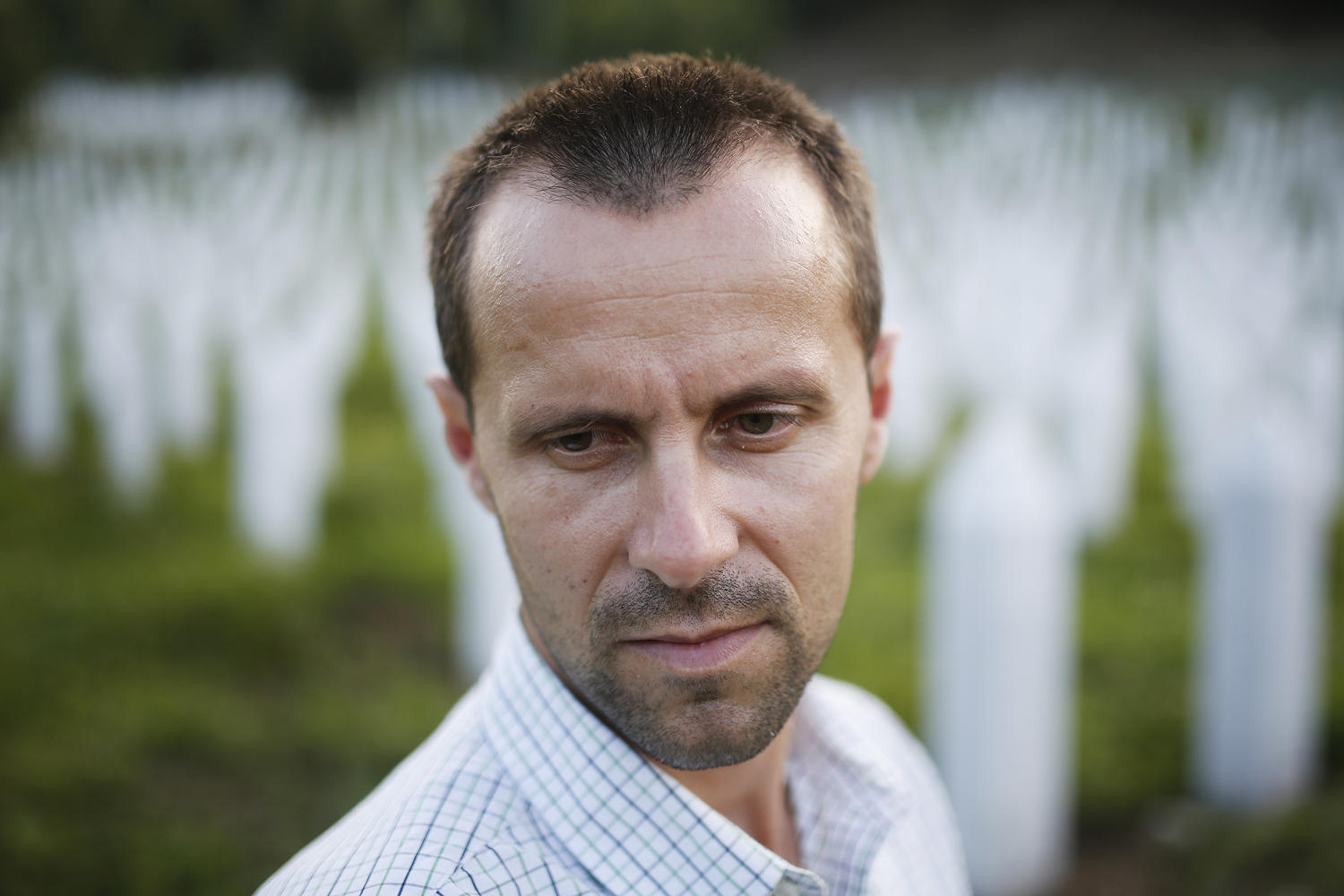
Thirty years after surviving a mass execution in Srebrenica, Bosnia, Nedzad Avdic continues to speak out against genocide denial. His story is one of unimaginable horror, survival, and resilience — and a powerful reminder of why truth matters, especially as denialism spreads both online and in politics. From escaping death at 17 to raising a family in the shadow of atrocity, Avdic’s journey is both heartbreaking and inspiring.
He remembers hearing gunfire, feeling a sharp pain in his side and arm, and then losing consciousness. When he awoke, more prisoners were lined up. As the truck that had brought him drove away, he and another wounded man used the darkness to escape. They wandered through the woods for days before reaching Muslim-controlled central Bosnia.
Last week, Avdic recounted his ordeal in Berlin to members of the German parliament, during a commemoration of the 30th anniversary of the fall of the UN-protected “safe area” of Srebrenica. Two international courts have declared the systematic killing of at least 7,000 Bosnian Muslim men and boys by Bosnian Serb forces the first genocide in Europe since World War II.
Yet the next day in parliament, members of the far-right Alternative for Germany (AfD) party disputed this, claiming the killings didn’t amount to genocide. “The Serbs shot men there, but generally spared women and children,” said Alexander Wolf. Another AfD member, Martin Sichert, took it further, using the platform to claim Muslims are waging a “birth jihad” in Germany. “Srebrenica reminds us to end multiculturalism before it’s too late,” he said.
Experts warn that disinformation and denial of war crimes—both past and present—are spreading rapidly. Whether it’s the Holocaust, atrocities in Syria, or ongoing conflicts in Ukraine and Gaza, basic facts are being distorted or erased.
Denial is also proving politically useful. In February, the AfD won the second-most seats in Germany’s parliament—the strongest result for a far-right party since WWII. Meanwhile in Bosnia, Serb leader Milorad Dodik has fueled conspiracy theories about Srebrenica, calling it “an arranged tragedy.” He even dismisses the identification of 6,981 victims—part of the largest DNA identification project in history—as a hoax.
Requests for comment from Dodik’s office and the AfD went unanswered.
At a conference marking the 30th anniversary of the massacre, directors of genocide memorials in Rwanda and Poland warned that denial has also become profitable. Online lies about war crimes drive so much traffic that money—not ideology—is often the motivator.
Some experts suggested using “better influencers” to counter misinformation. Avdic wants to be one of them.
As falsehoods multiply, he’s more determined than ever to speak for the thousands who died alongside him. “It’s becoming more aggressive day by day,” he said. “You have to know that we are all foreign bodies on this Earth, and we will all evaporate naturally sooner or later.”
I first met Avdic 30 years ago while covering the war in Bosnia. After Srebrenica fell, rumors of mass executions circulated. A traumatized teenage Avdic—whose father was later found in a mass grave—was among nine men who told me they had survived. When I visited the plateau in Petkovci, I found two human femurs.
He and his father were among some 10,000 Bosnian Muslim men who fled Srebrenica on foot in July 1995. The town had been declared a UN “safe area,” but the U.S., Europe, and 600 Dutch peacekeepers failed to protect it.
Women, children, and elderly men found refuge in a battery factory-turned-UN base, while most of the men attempted a 60-mile escape through the woods. When Serb forces attacked, Avdic lost his father in the chaos. “I lost him immediately,” he recalled. Days later, he was captured and brought to the execution site.
For 12 years, Avdic lived under a pseudonym, testifying at war crimes trials and staying far from Srebrenica for safety. But in 2007, he returned to his hometown. Despite losing four uncles and three cousins in the massacre, he found comfort in returning.
“I have fewer nightmares,” he said. “I cannot explain it.”
In 2014, he visited the execution site again—this time with mothers of the victims. That day, he felt compelled to speak publicly. “Words started to flow, something stronger than me,” he said.
He met his wife, Elvisa—a fellow survivor—in 2008. Her uncle and cousin were also killed. They married a year later and now have three daughters who attend a local school alongside Serb children. Though coexistence exists, few talk about the war.
“Hatred destroys, first of all, those who hate,” Avdic said.
He has since spoken across Europe, advocating for civilian protection in Syria and Ukraine. While emotionally difficult, speaking about Srebrenica is cathartic. “It was my choice to go to Berlin,” he said. “It is not something that I wish. It is emotional, and it is difficult for me.”
The old battery factory where Dutch peacekeepers were stationed is now a museum documenting the genocide. Across the street, thousands of white headstones mark the graves of murdered Muslim men and boys.
Yet Muslims are steadily leaving Srebrenica, driven by economic hardship and safety fears. The town is now about half Serb, half Muslim. Elvisa fears for their children’s future. “I was 13 years old then in 1995. My daughter is now 13,” she said. “When we are older, we care more and feel more.” She added: “Our grandmother was killed. They cut her throat.”
Tensions still simmer. A local priest once taunted Muslim residents by playing Serb nationalist songs. “He will die with his evil,” Avdic said.
Now, when he visits nearby towns, Serb nationalists sometimes mock him. “I’m not afraid of them,” he said. “But you never know what could happen, because I’m a witness.”
Despite the risks, Avdic believes staying in Srebrenica is a moral duty—to raise his children and honor those who died beside him.
“I will die proud,” he said. “And I believe my children will be proud they were born here.”






0 Comments